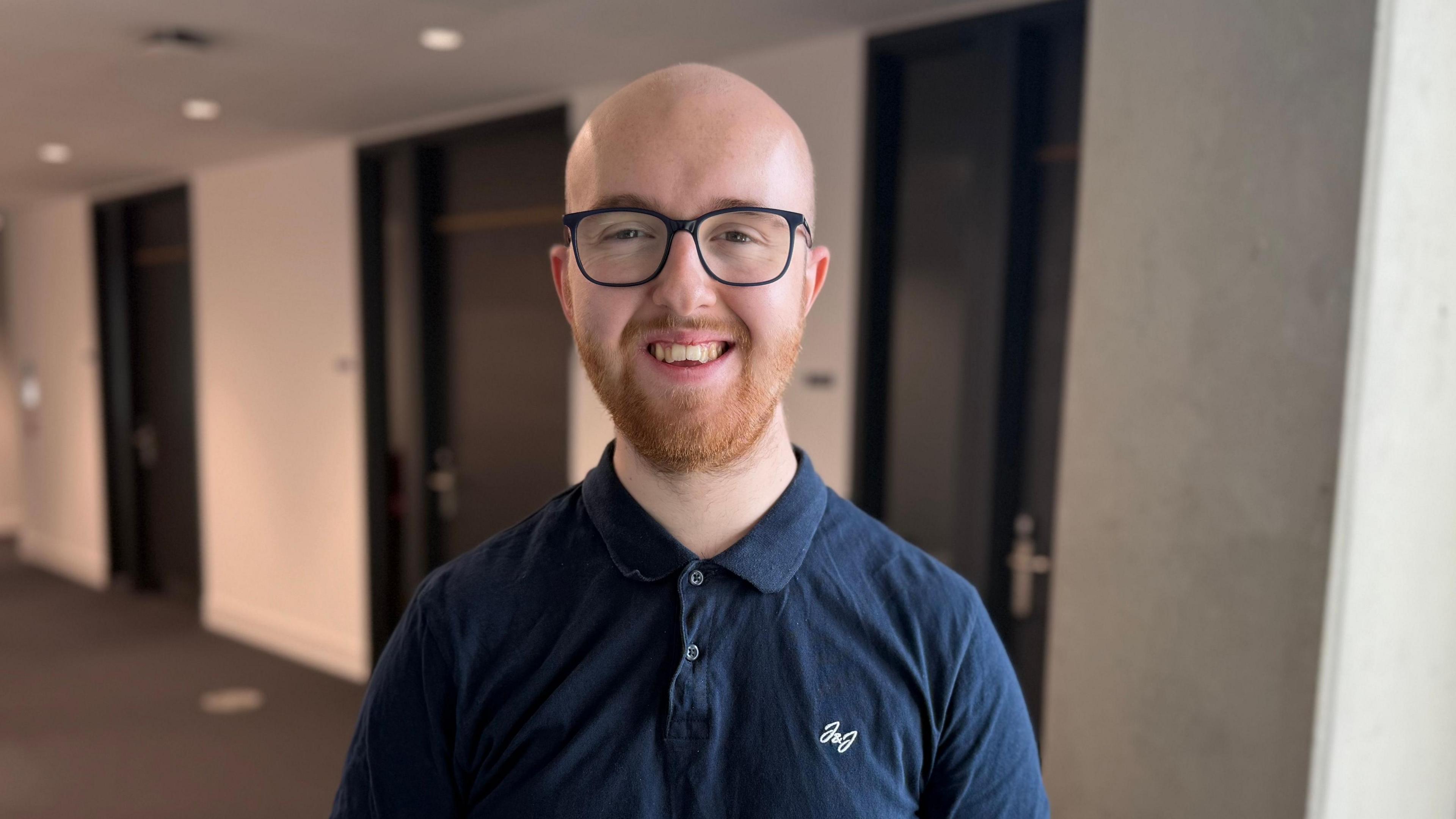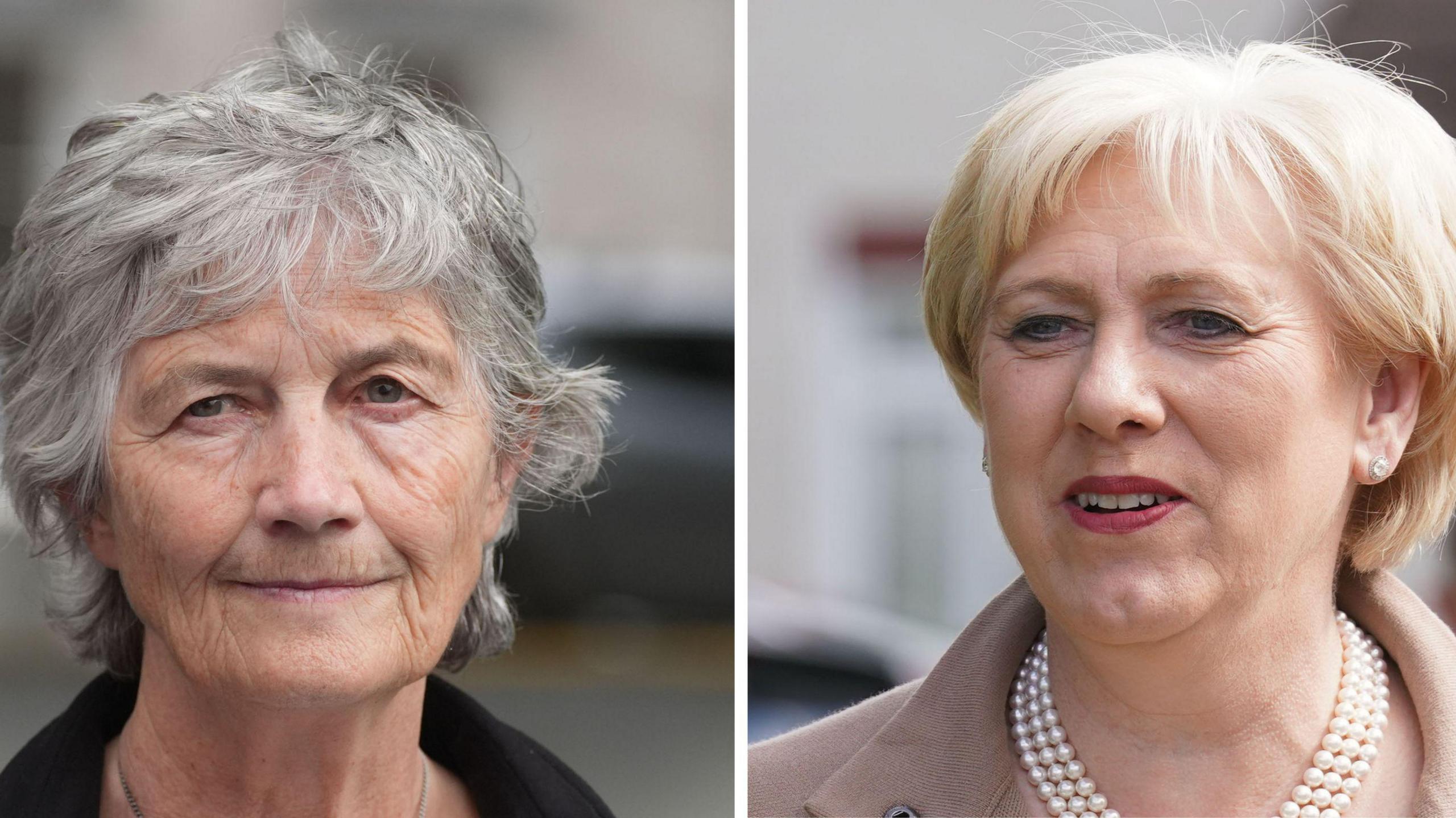Who were Ireland's former presidents?
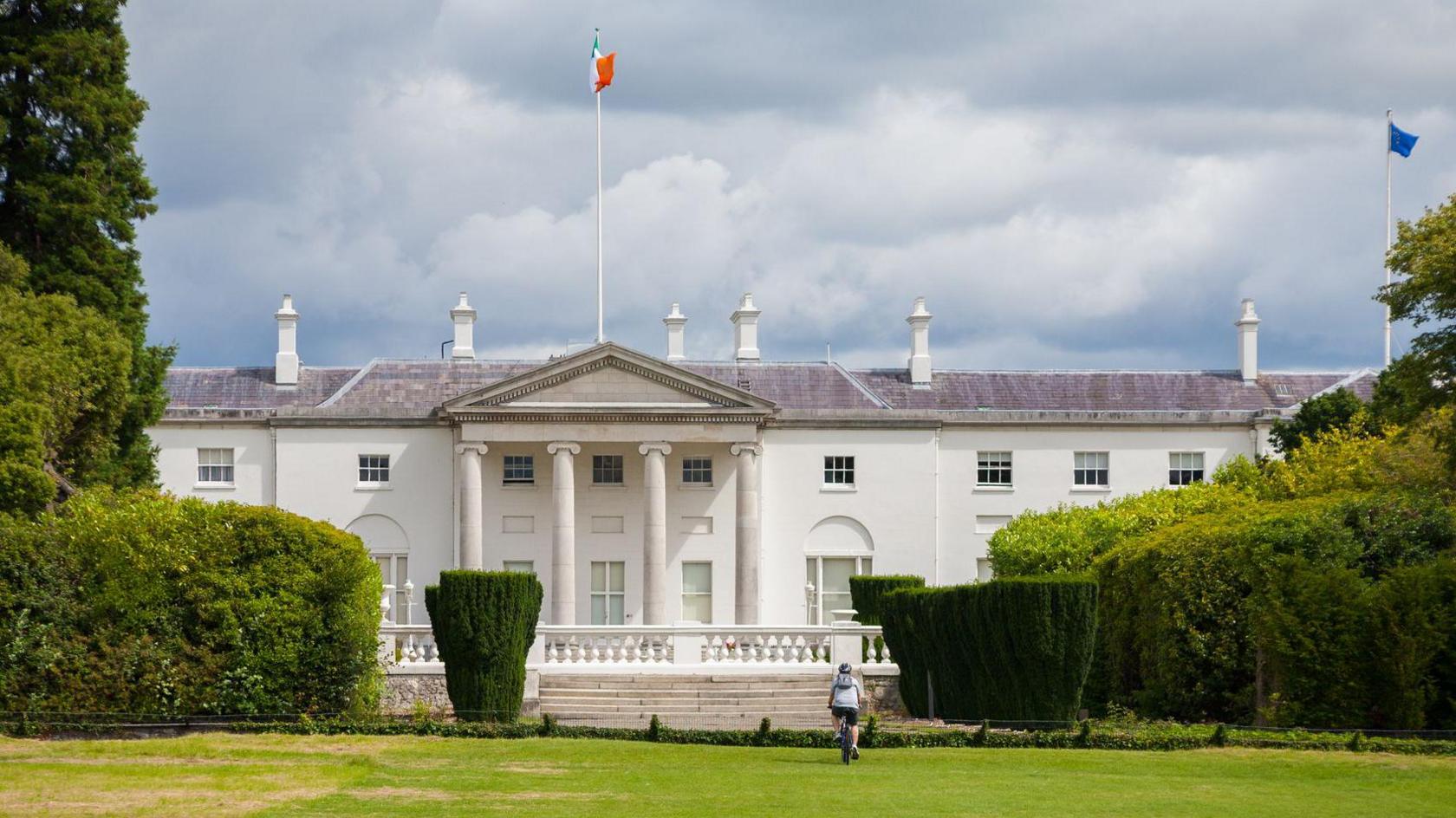
Áras an Uachtaráin, which is located in Phoenix Park, Dublin, is the official residence and principal workplace of the President of Ireland
- Published
People in the Republic of Ireland will head to the polls on Friday to elect their 10th president.
Voters will choose between Independent TD Catherine Connolly, who has been backed by Sinn Féin and other left wing parties and Heather Humphreys, the Fine Gael candidate.
But who has held the position before? BBC News NI takes a look back at previous heads of state.
Douglas Hyde: 1938-1945
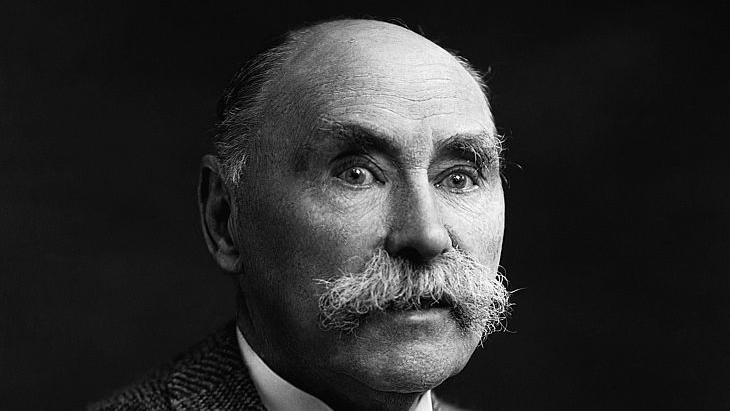
Douglas Hyde became the country's first head of state from 1938-1945
Bunreacht na hÉireann(the Irish Constitution) was enacted in 1937 and the following year Douglas Hyde became the country's first head of state.
He was the son of a Church of Ireland clergyman in County Roscommon.
His name in Irish was Dubhghlas de Híde and he was a co-founder of the Gaelic League, a movement aimed at reviving the Irish language and promoting and preserving Irish culture.
Hyde was a renowned academic who was the first professor of modern Irish at University College Dublin, and later became a member of Seanad Éireann (Irish Senate).
Following his inauguration, huge crowds lined Dublin's O'Connell Street as the presidential cavalcade stopped outside the General Post Office (GPO), where the new president paused to reflect on those who fought there during the 1916 Easter Rising.
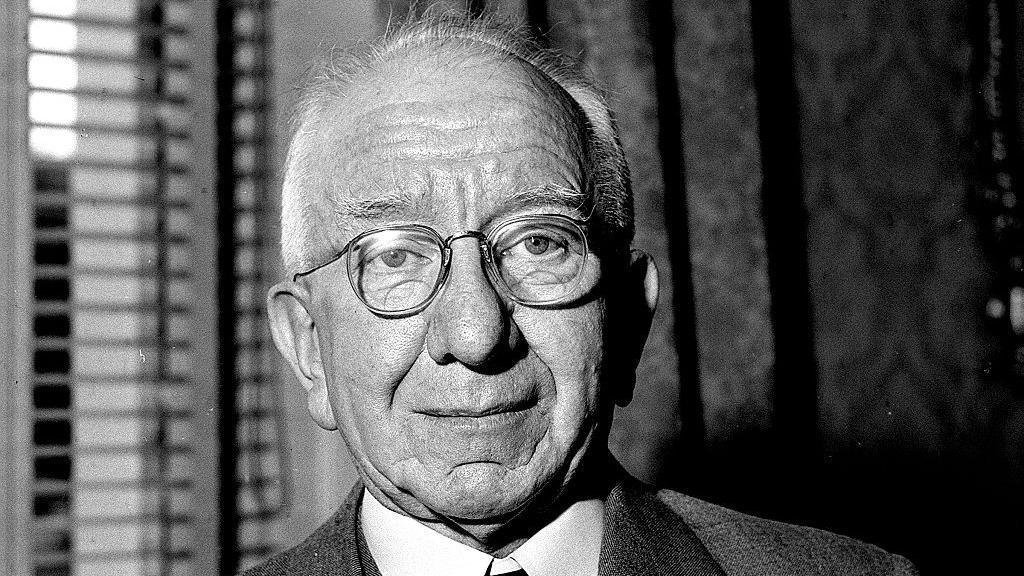
The second President of Ireland Seán T Ó Ceallaigh pictured in 1959
Seán T Ó Ceallaigh: 1945-1959
Seán T Ó Ceallaigh was Ireland's second president, serving two terms.
He was born in Dublin, educated by Christian Brothers and later worked in the National Library.
Ó Ceallaigh was one of the founders of Sinn Féin in 1905 and was also a leading member of the Gaelic League.
He became the ceann comhairle (speaker) of the first Dáil Éireann in 1919 and also served as a minister in several government departments and became tánaiste (deputy prime minister).
He was staff captain to the rebel leader Padraig Pearse during the 1916 Easter Rising and was imprisoned in England afterwards.
Seán T Ó Ceallaigh was the first Irish president to visit the United States of America, and addressed the United States Congress.
In 1948 he signed the Republic of Ireland Act, ending Ireland's membership of the British Commonwealth.
Eamon De Valera: 1959 -1973
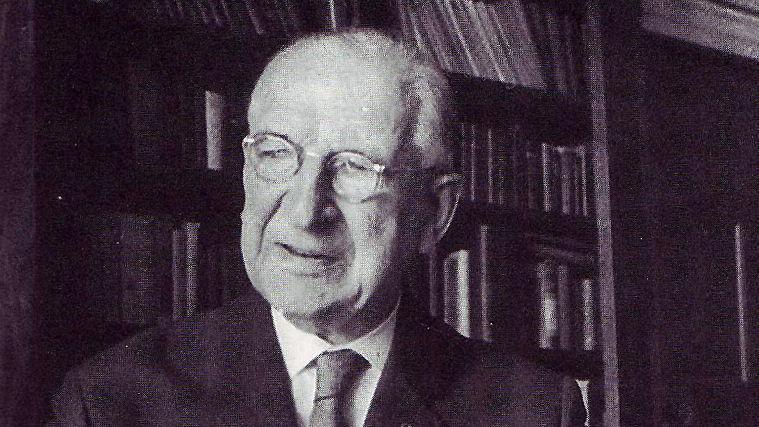
Former President of Ireland Eamon de Valera at Aras an Uachtarain pictured about 1968
Eamon De Valera was born in New York and was brought to Ireland as a two-year-old.
A teacher and university lecturer, he joined the Irish Volunteers when they were founded in 1913.
He took part in the 1916 Easter uprising and was sentenced to death by the British authorities in Ireland at the time.
The death sentence was subsequently commuted to penal servitude for life, but he was released as part of a general amnesty.
In 1917, he was elected as an MP for Sinn Féin in County Clare.
In May 1918 he was imprisoned in England for his part in orchestrating opposition to the British governments' extension of conscription to Ireland.
He opposed the Anglo-Irish Treaty of 1921.
He founded Fianna Fáil in 1926 and later became president of the Executive Council of the Irish Free State and minister for external affairs.
He went on to serve a number of terms as taoiseach.
Erskine Childers: 1973-1974
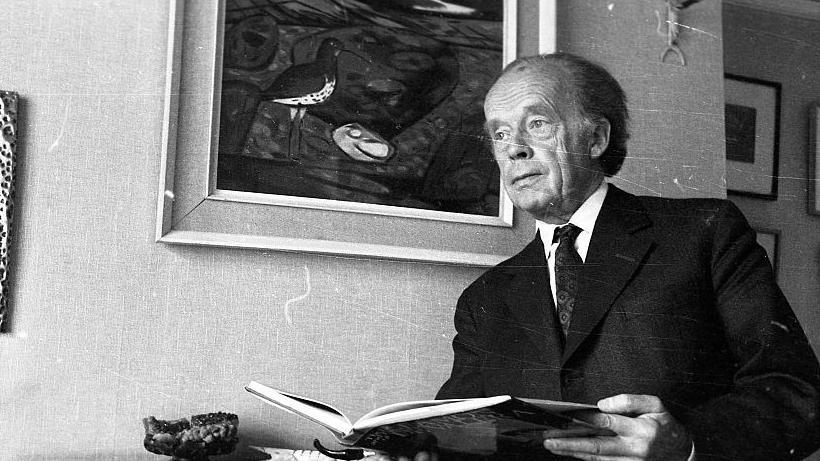
Former President of Ireland Erskine Childers pictured in 1973
Erskine Childers was the fourth and shortest-serving president.
He died in 1974, a year after his inauguration.
Born into a Protestant family in London, his father was the British author Robert Erskine Childers who, as part of a group of wealthy British and Anglo-Irish supporters of home rule in Ireland, was involved in the Asgard gun-running in 1914.
He came to Ireland in his mid-20s to work with the newly-launched Irish Press newspaper.
He was later elected to the Dáil as a Fianna Fáil TD and went on to serve in a number of government departments and as tánaiste.
He recalled his father's influence on his life and career, saying: "One of his greatest themes in everything he talked to me about was that you must be interested in people."
He is the only Irish president to have died in office.
Cearbhail Ó Dálaigh: 1974-1976
A barrister by profession, Cearbhail Ó Dálaigh served as attorney general of Ireland and became a judge of the Supreme Court and chief justice before being appointed a judge of the Court of Justice of the European Communities in 1973.
The following year, he was elected president of Ireland, but resigned in 1976 after the Minister for Defence Patrick Donegan described a decision by the president as "a thundering disgrace".
The comment was linked to O'Dálaigh's decision to refer a proposed new law, the Emergency Powers Bill, to the Supreme Court, to test its constitutionality in accordance with the powers of the president.
The anti-terrorist emergency powers legislation came at a time when the Irish authorities were dealing with an upsurge in paramilitary activity in the Republic of Ireland, linked to the Troubles.
O'Dálaigh tendered his resignation, citing "unsalvageable damage to the special relationship between the president and the minister for defence".
Patrick Hillery: 1976-1990
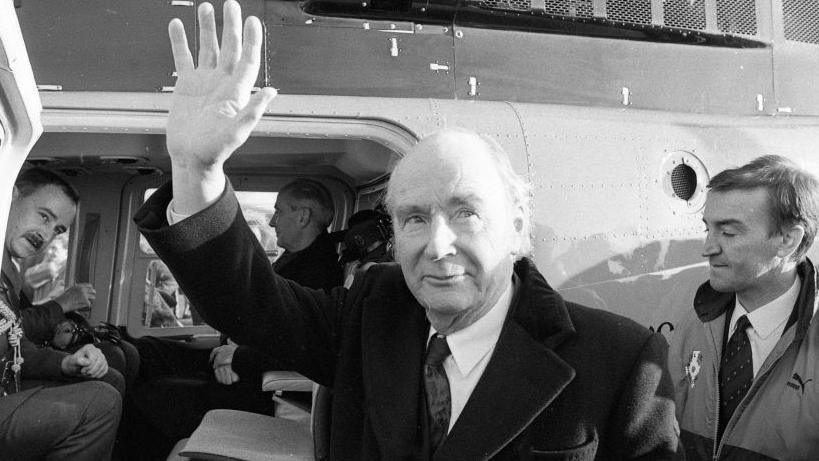
Former President of Ireland Patrick Hillery leaving Moneypoint Power Station after his last official duty as president in 1990
Patrick J Hillery was a medical doctor from County Clare who served two terms as president.
He was elected to the Dáil as a Fianna Fáil TD and became a minister in a number of government departments.
In 1973 he was appointed as vice president of the then Commission of the European Communities, with special responsibility for social affairs before becoming a European commissioner.
Following the political and constitutional turmoil in the aftermath of President O'Dálaigh's resignation, Patrick Hillery was chosen by Fianna Fáil to be the next head of state.
He said: "The office of president is a challenging one. It has been occupied before me by five of this country's most distinguished Irish men and I hope that I will prove a worthy successor to them."
Mary Robinson: 1990-1997
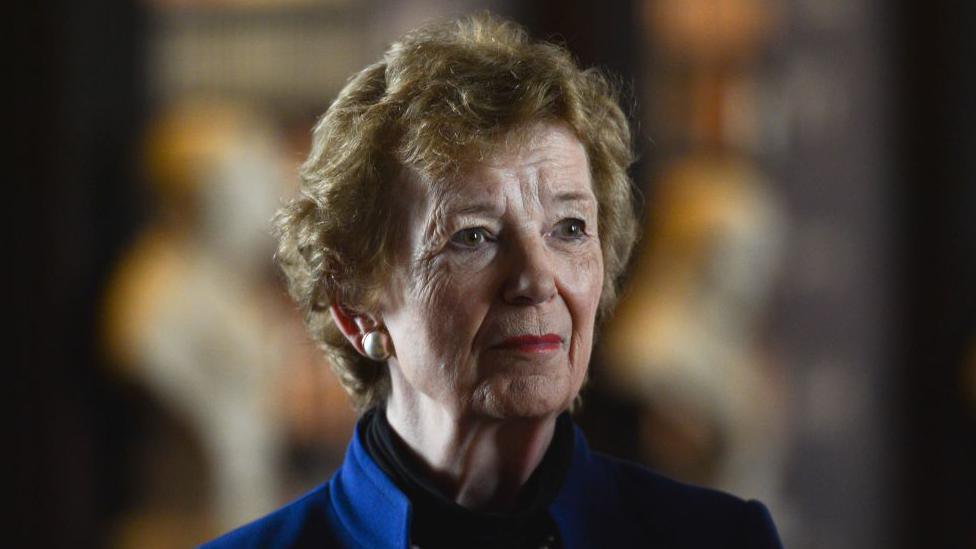
Former President Mary Robinson pictured in Dublin in 2017
The election of Mary Robinson came at a time of significant social change in Ireland.
She was the first female president: As a barrister and member of the Labour party, she was a member of Seanad Éireann (upper house of Irish parliament) for 20 years.
Her election as the seventh President of Ireland dealt a huge blow to the conservative Fianna Fáil party which had dominated Irish politics since the foundation of the Irish state.
In the decades before her election, she had campaigned extensively for women's rights, including the right of women to sit on juries, contraception and the repeal of a ban on women working in the civil service.
At her inauguration, she spoke about the seismic change her election signalled and invoked the spirit of "Mná na hÉireann" (the women of Ireland), who she said, "instead of rocking the cradle, rocked the system".
President Robinson resigned shortly before her term was due to finish in 1997 to become UN High Commissioner for Human Rights.
Mary McAleese: 1997-2011
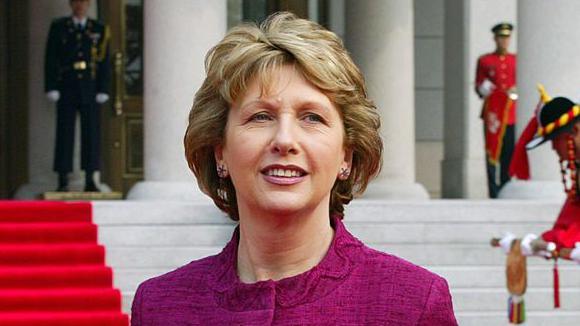
Former President of Ireland Mary McAleese pictured in South Korea in 2005
Mary McAleese was the first head of state to come from Northern Ireland.
A native of Belfast, she was best known as a broadcaster and academic when she emerged as the surprise outside choice of Fianna Fáil in 1997.
She was called to the Northern Ireland Bar in 1974, and she became the first female pro-vice chancellor of Queen's University in Belfast 20 years later.
She worked as a journalist and presenter in radio and television for Irish broadcaster RTÉ.
When she was elected President of Ireland, she adopted 'Building Bridges' as the theme for her presidency, a recognition of her personal understanding of the need for reconciliation between the Catholic and Protestant communities in Northern Ireland and better relations between Ireland and Britain.
One of the highlights of her presidency was the visit of Queen Elizabeth to Ireland in 2011.
During the visit, President McAleese said': "This visit is a culmination of the success of the peace process.
"It is an acknowledgement that while none of us can change the past, we have chosen to change the future."
She completed two terms of office in 2011.
Michael D Higgins: 2011-2025
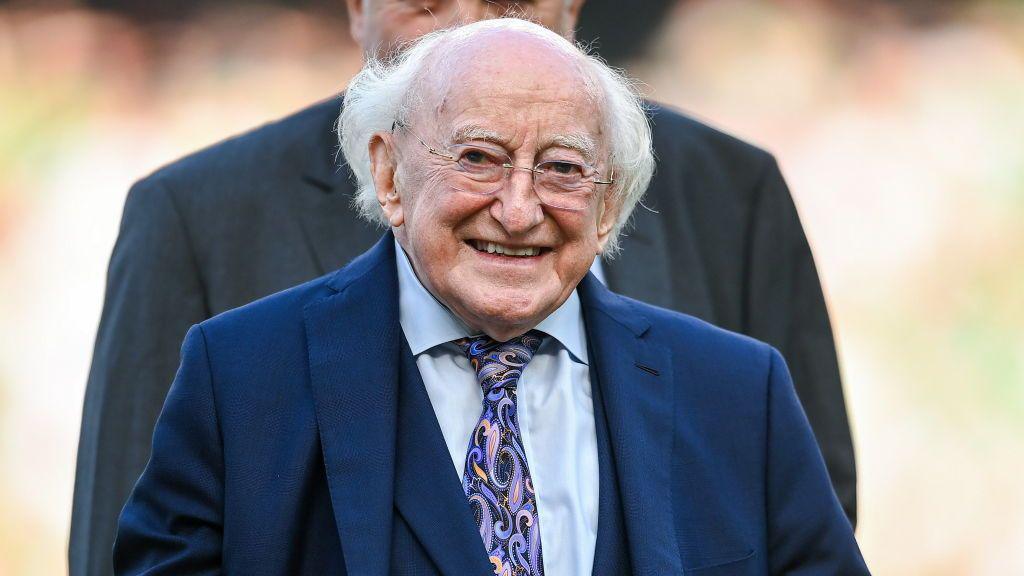
Michael D Higgins pictured in Dublin in 2024
The election of Michael D Higgins came after more than three decades of service in national politics across the Dáil and Senate.
He spent much of his adult life engaged in social and human rights activism in Ireland and abroad.
His appointment as the country's first minister for arts, culture, and the gaeltacht was credited with breathing new life into the arts sector and his department also establishment the Irish language TV channel Teilifís na Gaeilge, now TG4.
In recent years, he has frequently commented publicly about a range of national issues including the Republic of Ireland's housing crisis and the war in Gaza, prompting debate about the scope within the Irish constitution for the president to comment on such matters.
During many official visits at Áras an Uachtaráin (official residence of the president) over his two seven-year terms of office, Higgins was accompanied by his pet Bernese Mountain dogs.
President Higgins is due to leave office at midnight on10 November and his successor is expected to be inaugurated soon afterwards.
Related topics
- Published12 October
